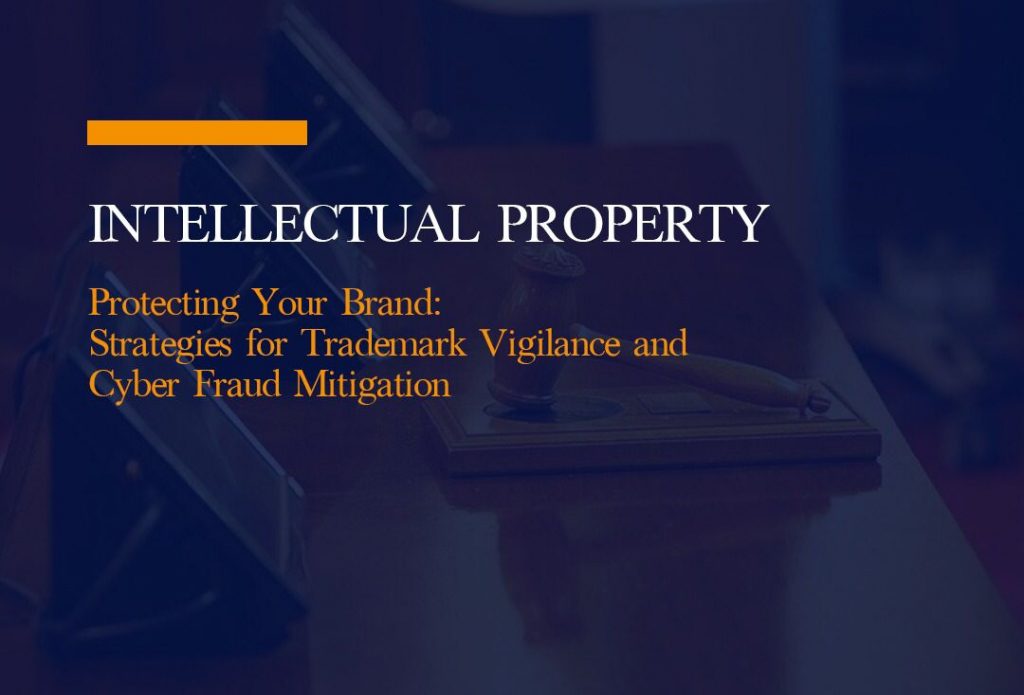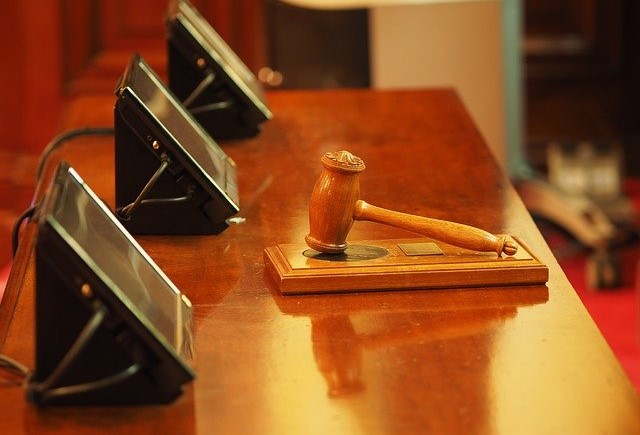What is a Trademark?
A trademark is a word, phrase, symbol, or design that identifies and distinguishes the source of the goods of one party from those of others. It can also be used to identify services provided by one party and distinguish them from services provided by others. Trademarks are legally protected by written law and common law.
World over, Trademarks are generally recognized and protected in respect of each territory/ country in which it is expressly registered. Territorial protection of trademarks is the principle that a trademark is valid and protected in the territory in which it is registered, and in other countries only if it has been registered or is protected by treaty or convention. This means that a trademark owner needs to register their trademark in each jurisdiction in which they wish to protect it, as protection is not automatically extended across all territories.
What is the legal relevance of Trademark registration?
The value of trademark registration is that it gives the owner exclusive rights to use the trademark for the particular goods and services it is registered for. It also gives the owner the right to sue for infringement of the trademark and seek damages, as well as to exclude others from using the trademark without permission. Registration also serves as constructive notice of the trademark, which can prevent others from claiming they were unaware of the trademark’s existence.
As far as business considerations are concerned, Trademarks are used in trade and business to protect the brand identity of a company, product, or service. They help consumers distinguish one company’s products or services from those of another, and they also help companies protect their valuable brand assets. Trademarks can be registered with the relevant authorities and can also be used to deter competitors from using a company’s name or logo without permission. They can also be used to take legal action against those who do infringe upon a company’s trademark.
Trademarks and cyber brand identity
In most Industries and sectors today, the transition from the brick-and-mortar/analog presence to the digital/ cyber realm has been necessitated by various considerations to the level that it has now become a necessity and inescapable fact of business. For most businesses, it becomes important to maintain the same identity and recognition that has been earned in the physical realm in the cyber/ digital world. This can be accomplished by using the same Trademark, logo, branding, trade name, and other visual elements across both platforms.
In the digital world, trademarks are an important part of cyber identity. Trademarks can help people to establish, maintain and protect their cyber identity by creating a unique brand or logo that will be associated with them online. This helps people stand out and can also be used as a form of protection against identity theft.
Unfortunately, despite all the advantages online business or cyber presence brings, there are inherent risks that cyber presence or digital business carries
Trademarks infringement and cyber fraud risks
Cyber fraud is any type of fraudulent activity that involves the use of computers, networks, and/or the internet. Cyber fraud is a growing risk to businesses and individuals alike, and it is important to take steps to mitigate against it.
Trademark infringement can be used to perpetrate cyber fraud in a variety of ways. For example, cybercriminals may set up fake websites or social media accounts that use established trademarks to deceive consumers into providing personal information or making payments for goods or services that are never delivered. In some cases, once personal information such as credit card numbers or banking information is shared through these fake websites, customers or clients can become victims of financial theft.
Cybercriminals may also create fake online stores that use the trademarks of legitimate companies to sell counterfeit products. In addition, cybercriminals may use trademarks to deceive customers into downloading malicious software or clicking on malicious links. Cybercriminals generally use trademarked logos, images, and other intellectual property assets to launch phishing campaigns, spread malware, and other malicious activities.
While there are various types of cyber fraud strategies/ styles cybercriminals normally deploy, the vast majority of them hinge on their ability to successfully create a deceptive similarity between the identity of the legitimate business and the tool/ platform being used for furthering the cyber fraud. So whether it is spoofing, phishing scams, or in the very clear case of domain name hijacking (the act of changing the registration of a domain name without the permission of the original owner, or by abuse of privileges on domain hosting and domain registrar systems) or typosquatting (is a form of cybersquatting targeting people that accidentally mistype a website address directly into their web browser URL field. Cybersquatters register domain names that are a slight variation of the target brand, usually a common spelling error), there is a higher risk for the legitimate business if there is no strong cyber identity through a proactive use/ registration of the relevant domain name and a robust protection/ enforcement strategy to accompany such registration.
Mitigation of cyber fraud risks
Generally speaking, however, there are some steps that any business that seeks to protect its identity should implement when it comes to cyber presence;
a. Invest in Trademark Protection: Organizations and businesses should invest in trademark protection to ensure that their brands are not being misused by cyber fraudsters. This investment typically involves registering the trademark with the relevant government authorities, educating the public on the proper usage of the trademark, and creating a brand identity around the trademark. Part of this investment should entail the capacity to renew all relevant trademarks as and when they expire.
b. Use trademark Ensuring that the trademark is used consistently across all platforms, including online, will help to protect it from misuse online. In this case, once a Trademark has been registered with the relevant authority, it becomes important for the same Trademark (especially in the case of Trade names/ Words) that has gained distinction should preferably be used in the creation or registration of a Domain name for website purposes.
Registering a domain name that incorporates a trademark can help to protect that trademark from being used by someone else. Additionally, having a domain name that matches a trademarked name can help to ensure that customers are able to easily find the correct website or business associated with the trademark. A domain name can be used to protect a trademark because if somebody else registers a domain name with the same name as your trademark, it can create confusion among consumers and damage your brand.
c. Monitor the trademark by regularly searching for instances of trademark infringement or misuse of the trademark online. Trademark monitoring is an important part of protecting your brand and its associated products, services, and reputation. By monitoring for potential infringements, it can help one stay ahead of any unauthorized uses of your trademark, and it can help you take quick action if one spots any violations. It also helps to ensure that you are protecting your trademark by being proactive in monitoring and enforcing your rights. This can help to prevent others from obtaining a trademark registration or using your trademark in a way that could be damaging to your business.
d. Trademark Enforcement. Trademark enforcement in relation to domain abuse or infringement is typically done through a variety of methods, including cease-and-desist letters, domain name cancellation or transfer requests, The Internet Corporation for Assigned Names and Numbers (ICANN’s) Uniform Domain-Name Dispute-Resolution Policy (UDRP) proceedings, and, in some cases, civil litigation.
Cease-and-desist letters are typically the first step in the enforcement process. These letters are sent to the domain abuser or infringer and demand that they stop using the infringing domain name. The letter may also ask the infringer to transfer ownership of the domain name to the trademark owner.
If the cease-and-desist letter is unsuccessful, the trademark owner may then pursue a domain name cancellation or transfer request. This is usually done through the domain registrar, which is the organization that manages the domain name. The registrar may cancel the domain name or transfer it to the trademark owner. The trademark owner may also pursue a UDRP proceeding. This is a process that allows a trademark owner to resolve a domain dispute without resorting to civil litigation. Finally, if all other options fail, a trademark owner may file a lawsuit against the domain abuser or
Conclusion
With the seemingly irreversible cyber revolution around all businesses, small or large, corporates, and organizations are relying on cyber/ digital systems to manage their day-to-day activities. This inevitably renders them susceptible to cyber fraud thereby increasing the need for mitigation measures. While there are various security measures that can strongly safeguard cyber systems from various online attacks or any unauthorized access, the need to implement basic Trademark protection measures cannot be underestimated.
By protecting online brand identity, companies can protect their reputation and maintain their market share. Additionally, cyber security can help protect brands from financial losses due to identity theft or other fraudulent activities.
Caveat
The contents of this article are intended to convey general information only and not to provide legal advice or opinions. The contents of this website, and the posting and viewing of the information on this website, should not be construed as, and should not be relied upon for legal advice in any particular circumstance or fact situation. An Advocate/ attorney should be contacted for advice on specific factual legal issues.



